Lele Zhang
Scalable Hierarchical Reinforcement Learning for Hyper Scale Multi-Robot Task Planning
Dec 27, 2024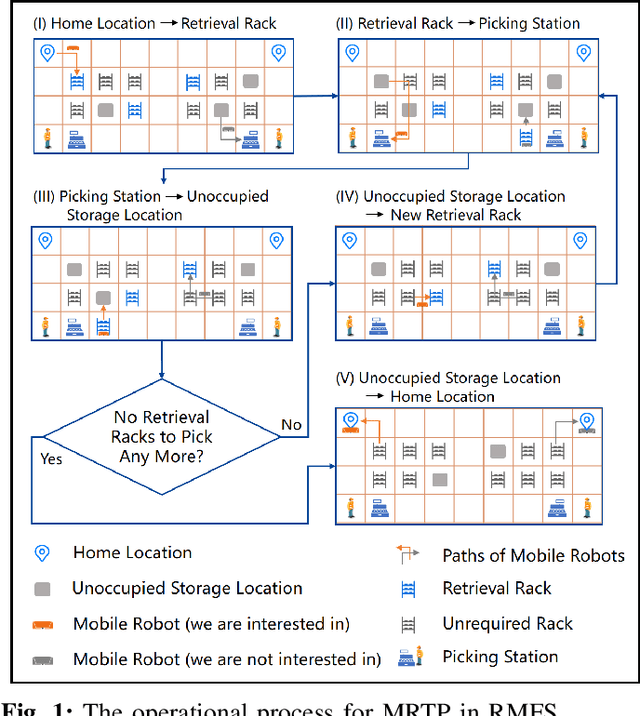
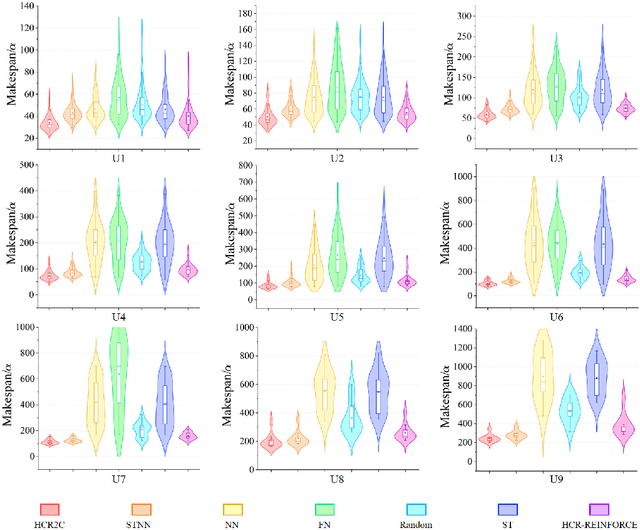
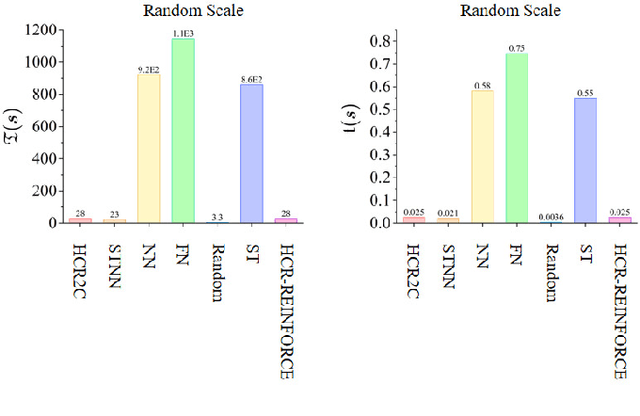
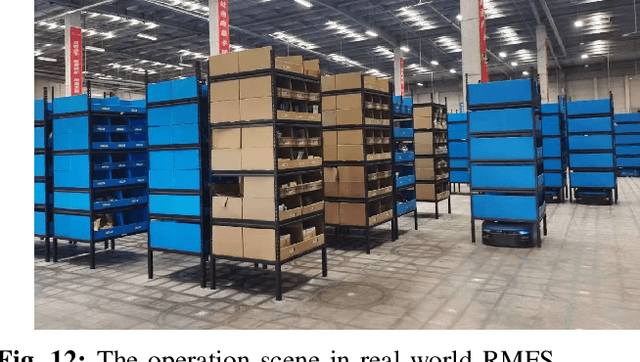
Abstract:To improve the efficiency of warehousing system and meet huge customer orders, we aim to solve the challenges of dimension disaster and dynamic properties in hyper scale multi-robot task planning (MRTP) for robotic mobile fulfillment system (RMFS). Existing research indicates that hierarchical reinforcement learning (HRL) is an effective method to reduce these challenges. Based on that, we construct an efficient multi-stage HRL-based multi-robot task planner for hyper scale MRTP in RMFS, and the planning process is represented with a special temporal graph topology. To ensure optimality, the planner is designed with a centralized architecture, but it also brings the challenges of scaling up and generalization that require policies to maintain performance for various unlearned scales and maps. To tackle these difficulties, we first construct a hierarchical temporal attention network (HTAN) to ensure basic ability of handling inputs with unfixed lengths, and then design multi-stage curricula for hierarchical policy learning to further improve the scaling up and generalization ability while avoiding catastrophic forgetting. Additionally, we notice that policies with hierarchical structure suffer from unfair credit assignment that is similar to that in multi-agent reinforcement learning, inspired of which, we propose a hierarchical reinforcement learning algorithm with counterfactual rollout baseline to improve learning performance. Experimental results demonstrate that our planner outperform other state-of-the-art methods on various MRTP instances in both simulated and real-world RMFS. Also, our planner can successfully scale up to hyper scale MRTP instances in RMFS with up to 200 robots and 1000 retrieval racks on unlearned maps while keeping superior performance over other methods.
Pedestrian Volume Prediction Using a Diffusion Convolutional Gated Recurrent Unit Model
Nov 05, 2024Abstract:Effective models for analysing and predicting pedestrian flow are important to ensure the safety of both pedestrians and other road users. These tools also play a key role in optimising infrastructure design and geometry and supporting the economic utility of interconnected communities. The implementation of city-wide automatic pedestrian counting systems provides researchers with invaluable data, enabling the development and training of deep learning applications that offer better insights into traffic and crowd flows. Benefiting from real-world data provided by the City of Melbourne pedestrian counting system, this study presents a pedestrian flow prediction model, as an extension of Diffusion Convolutional Grated Recurrent Unit (DCGRU) with dynamic time warping, named DCGRU-DTW. This model captures the spatial dependencies of pedestrian flow through the diffusion process and the temporal dependency captured by Gated Recurrent Unit (GRU). Through extensive numerical experiments, we demonstrate that the proposed model outperforms the classic vector autoregressive model and the original DCGRU across multiple model accuracy metrics.
Sample-based Dynamic Hierarchical Transformer with Layer and Head Flexibility via Contextual Bandit
Dec 12, 2023Abstract:Transformer requires a fixed number of layers and heads which makes them inflexible to the complexity of individual samples and expensive in training and inference. To address this, we propose a sample-based Dynamic Hierarchical Transformer (DHT) model whose layers and heads can be dynamically configured with single data samples via solving contextual bandit problems. To determine the number of layers and heads, we use the Uniform Confidence Bound while we deploy combinatorial Thompson Sampling in order to select specific head combinations given their number. Different from previous work that focuses on compressing trained networks for inference only, DHT is not only advantageous for adaptively optimizing the underlying network architecture during training but also has a flexible network for efficient inference. To the best of our knowledge, this is the first comprehensive data-driven dynamic transformer without any additional auxiliary neural networks that implement the dynamic system. According to the experiment results, we achieve up to 74% computational savings for both training and inference with a minimal loss of accuracy.
FedEmb: A Vertical and Hybrid Federated Learning Algorithm using Network And Feature Embedding Aggregation
Dec 04, 2023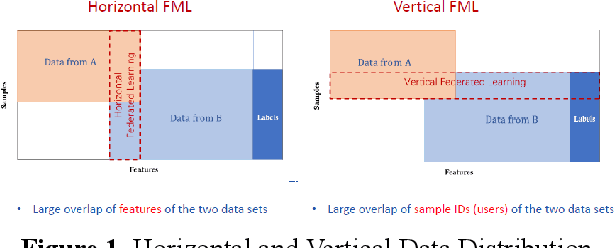

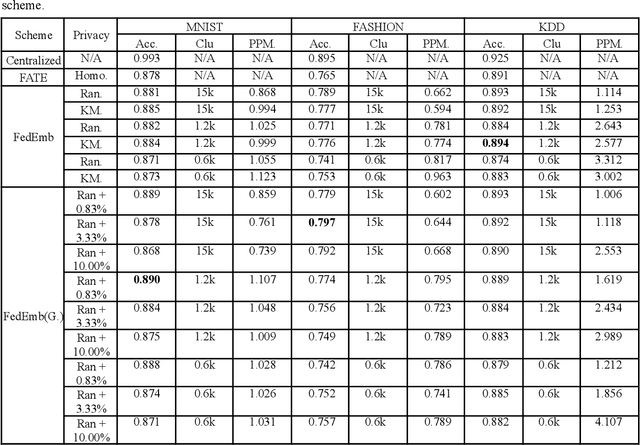
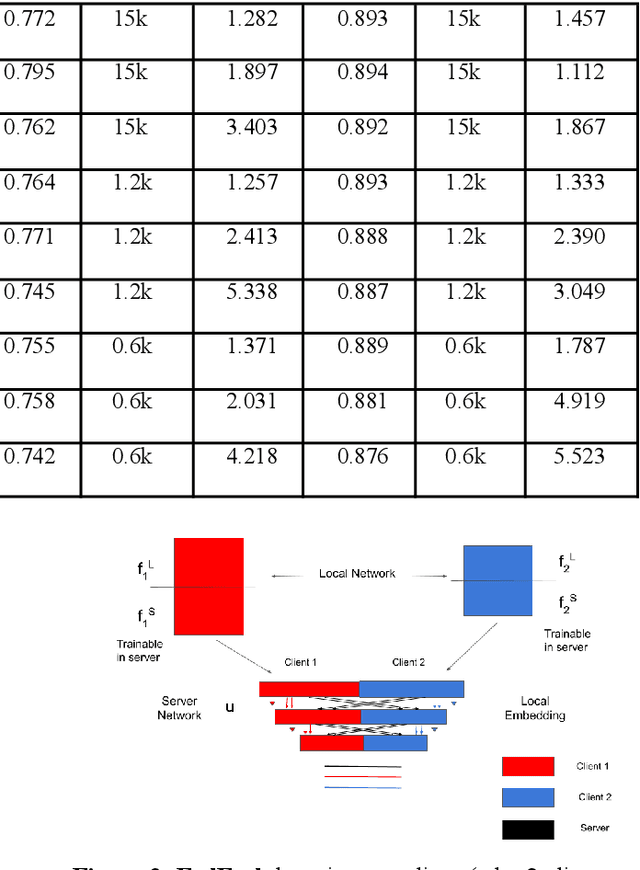
Abstract:Federated learning (FL) is an emerging paradigm for decentralized training of machine learning models on distributed clients, without revealing the data to the central server. The learning scheme may be horizontal, vertical or hybrid (both vertical and horizontal). Most existing research work with deep neural network (DNN) modelling is focused on horizontal data distributions, while vertical and hybrid schemes are much less studied. In this paper, we propose a generalized algorithm FedEmb, for modelling vertical and hybrid DNN-based learning. The idea of our algorithm is characterised by higher inference accuracy, stronger privacy-preserving properties, and lower client-server communication bandwidth demands as compared with existing work. The experimental results show that FedEmb is an effective method to tackle both split feature & subject space decentralized problems, shows 0.3% to 4.2% inference accuracy improvement with limited privacy revealing for datasets stored in local clients, and reduces 88.9 % time complexity over vertical baseline method.
* Accepted by Proceedings on Engineering Sciences
Joint Detection Algorithm for Multiple Cognitive Users in Spectrum Sensing
Dec 01, 2023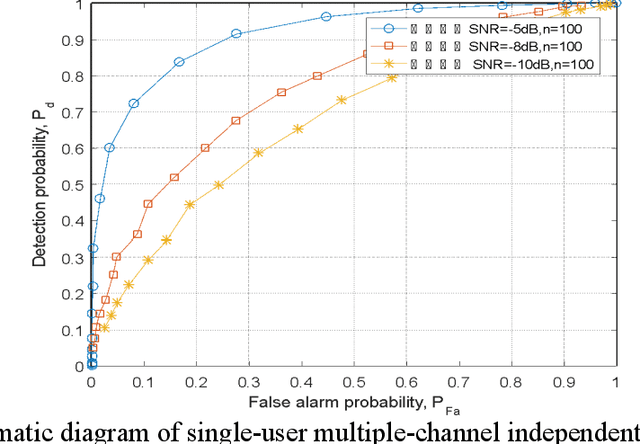
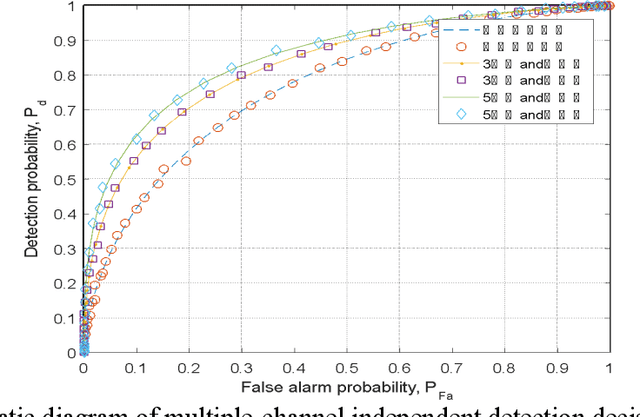
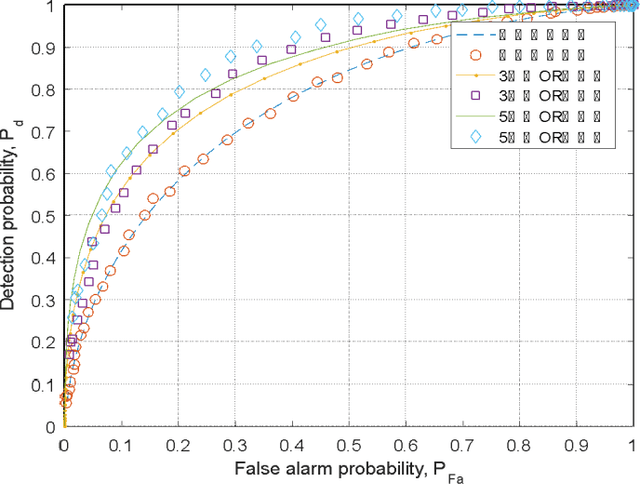
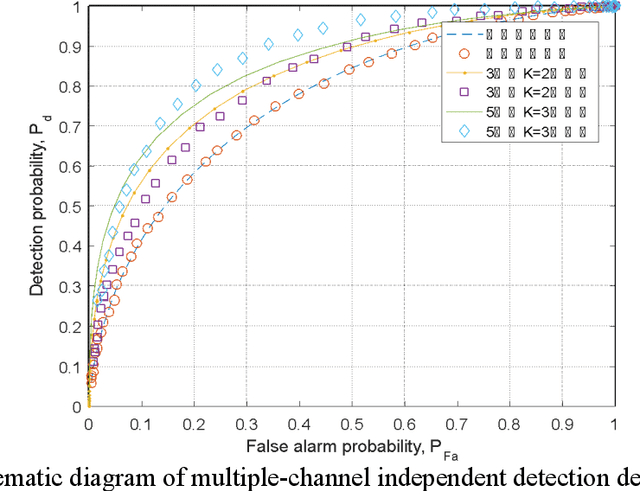
Abstract:Spectrum sensing technology is a crucial aspect of modern communication technology, serving as one of the essential techniques for efficiently utilizing scarce information resources in tight frequency bands. This paper first introduces three common logical circuit decision criteria in hard decisions and analyzes their decision rigor. Building upon hard decisions, the paper further introduces a method for multi-user spectrum sensing based on soft decisions. Then the paper simulates the false alarm probability and detection probability curves corresponding to the three criteria. The simulated results of multi-user collaborative sensing indicate that the simulation process significantly reduces false alarm probability and enhances detection probability. This approach effectively detects spectrum resources unoccupied during idle periods, leveraging the concept of time-division multiplexing and rationalizing the redistribution of information resources. The entire computation process relies on the calculation principles of power spectral density in communication theory, involving threshold decision detection for noise power and the sum of noise and signal power. It provides a secondary decision detection, reflecting the perceptual decision performance of logical detection methods with relative accuracy.
* https://aei.ewapublishing.org/article.html?pk=e24c40d220434209ae2fe2e984bcf2c2
 Add to Chrome
Add to Chrome Add to Firefox
Add to Firefox Add to Edge
Add to Edge